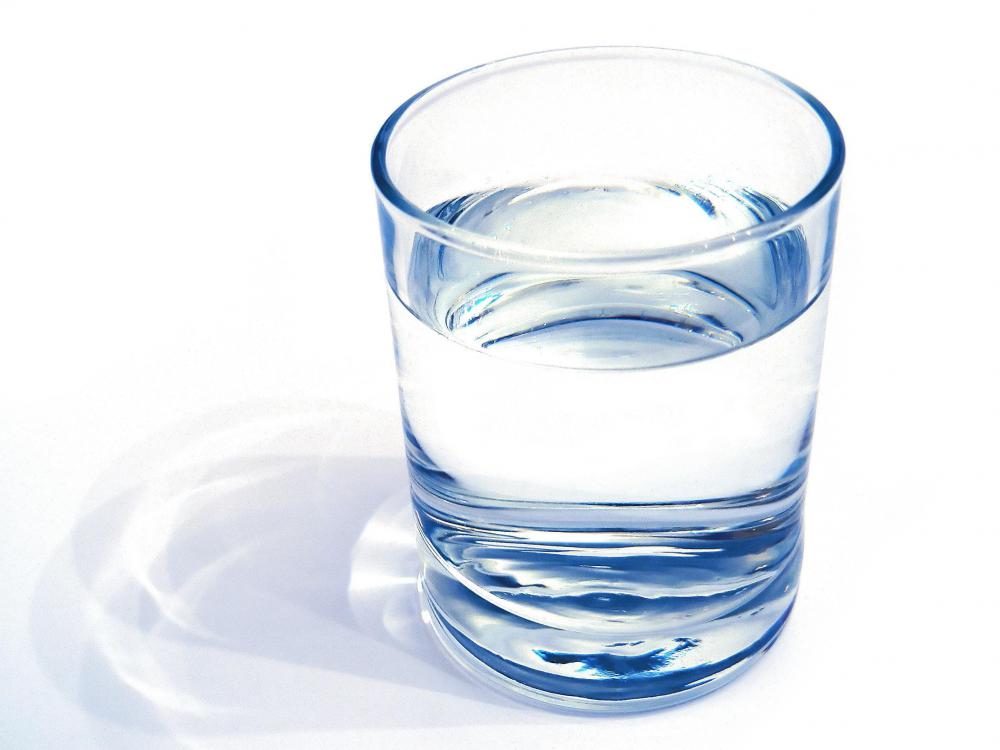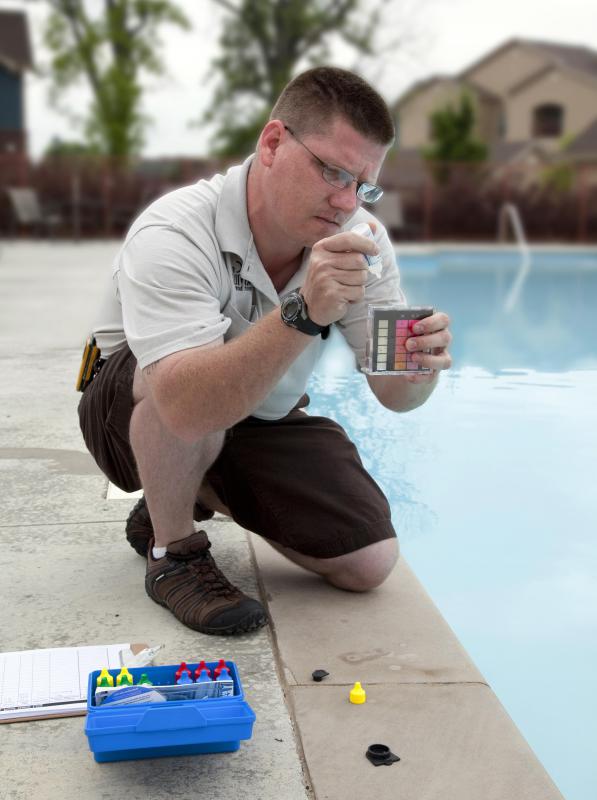At HomeQuestionsAnswered, we're committed to delivering accurate, trustworthy information. Our expert-authored content is rigorously fact-checked and sourced from credible authorities. Discover how we uphold the highest standards in providing you with reliable knowledge.
What is a Chlorine Test?
A chlorine test is generally given to determine the presence and amount of chlorine in drinking water, in the air, or in a swimming pool. Chlorine is a dangerous and poisonous chemical at high levels and is yellowish green in color. It is commonly mixed with various other chemicals for the purpose of purifying water. Combined with other chemicals, chlorine can also create other substances like bleach, for example, a product that is often used in many households.
Although chlorine has many useful purposes, it can be unsafe at extremely high levels. Depending on the jurisdiction, water supplies are usually treated to prevent the growth of bacteria and various viruses. Measurable and safe levels of chlorine are maintained by conducting a chlorine test. Some experts suggest that people should not drink water where the chlorine level is above 4 parts per million (ppm).

Chlorine is commonly used in swimming pools as a sanitizer to kill algae and bacteria. In many locations, commercial swimming pools are required to test the chlorine levels in the water hourly. Homeowners who own pools should perform a chlorine test at least two or three times a week. Automatic chlorinators can feed chlorine into the pool continuously, helping levels to remain consistent. The recommended level of chlorine in a home pool should be 1 to 2 ppm.

Sometimes an undesirable odor can be detected when drinking water and swimming pools have been treated with chlorine. As long as the levels are not too high, the water should be safe to drink or swim in. There are several types of chlorine test kits that are available that can be performed, however, in cases where one suspects that chlorine levels are too high.

Chlorine can also be found in the atmosphere. There is no safe set level for chlorine that travels into the air of people's homes, however. If a person can smell chlorine in his or her home, it is likely that levels are higher than is safe. Chlorine can usually be smelled when levels are between 0.02 and 3.4 ppm.
When a person is exposed to high levels of chlorine, he or she may experience vomiting, pain in the chest, breathing problems, coughing, and the accumulation of fluid in the lungs. An individual's genetics, health, individual lifestyle and whether or not he or she has been previously exposed to chlorine also plays a part in how a person reacts to high levels of the poisonous chemical. Doctors can administer a type of chlorine test on individuals by testing and examining a person's lungs, skin, and teeth to determine if exposure to chlorine has had any negative affects on the person's health.
AS FEATURED ON:
AS FEATURED ON:













Discuss this Article
Post your comments